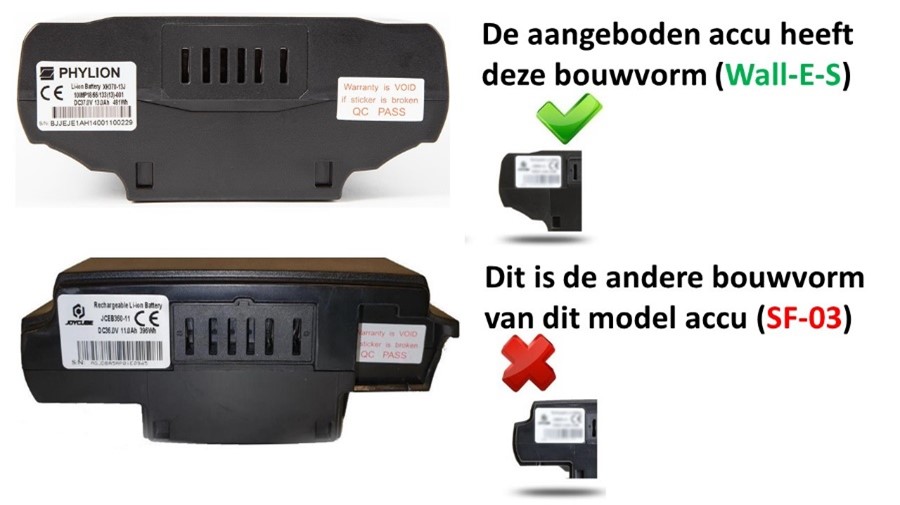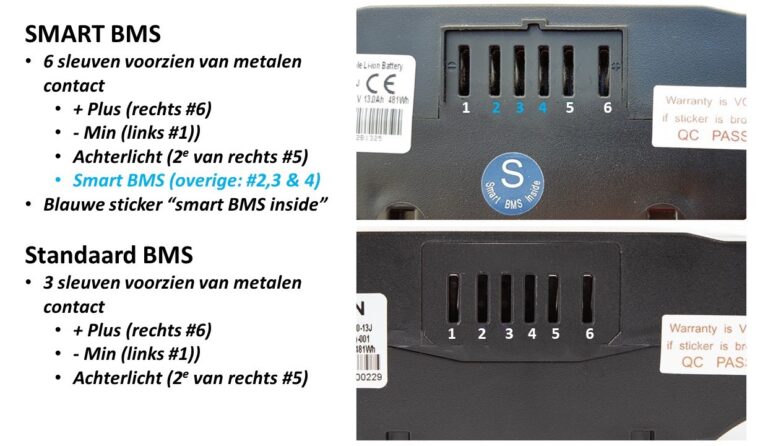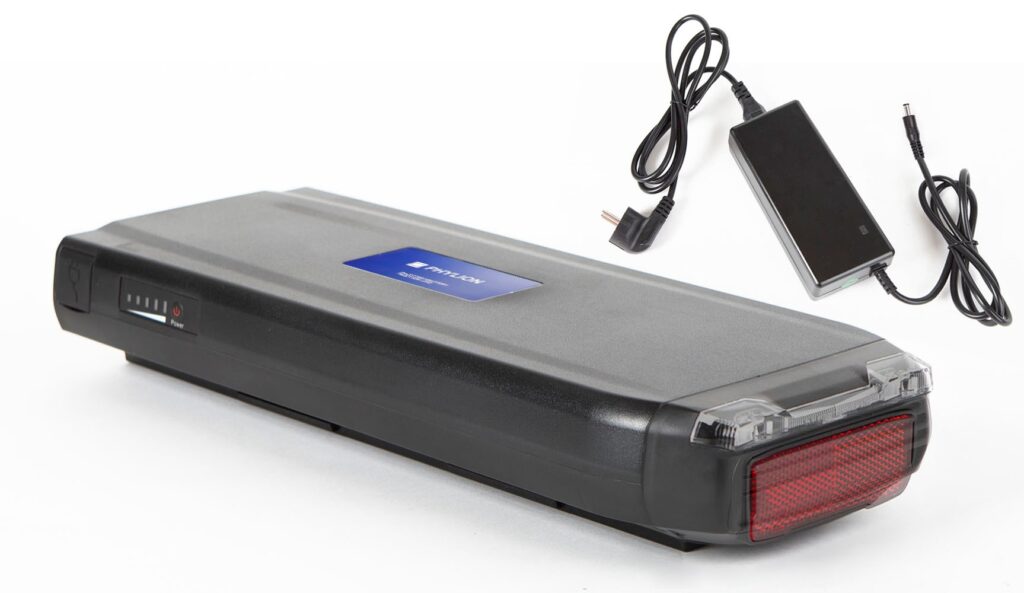Choosing the right Phylion XH370 (EBG371) rack battery

Determine in 4 steps if this is the right battery:
STEP 1: The building form
This type of battery has a few builds of which the 2 shown are the most common. The battery offered here is of the upper type with the green check mark. Does this model match the shape of your current battery → then go to step 2.
STEP 2: The voltage
In addition to the standard 37-volt, this model is also available in 36- and 48-volt, with the 36- and 37-volt variants being interchangeable. If your current battery has a voltage (DC) of 36- or 37 volts then the battery offered is the correct one → now go to step 3.
Note: The XH370 model year 2024 (EBG370-140H1S24) uses the latest generation of battery cells and delivers 518 Wh of capacity (37V, 14 Ah) as standard. Older generations like the XH370-13 & XH370-10J have a lower Ah value. For the technical operation of the battery, a higher or lower Ah value does not matter, it is only an indication of the capacity of the battery (how long the battery can deliver the requested voltage). So 14 Ah gives 40% more capacity than !0 Ah at the same voltage.
STEP 3: Standard or smart BMS (battery management system)
A smart or intelligent BMS communicates with the bicycle and offers more monitoring & analysis capabilities than a standard BMS. Which battery is suitable depends on the bike. Is it prepared for communication with the battery or not.
The main difference is in how the remaining battery capacity is determined and shown on the bike’s display. A battery with smart BMS accurately records the amount of energy absorbed and released and determines the remaining battery capacity based on this and taking into account the influence of temperature etc. This will be communicated to the bicycle. With a battery with standard BMS, the bike simply measures the battery voltage between the poles and then the bike’s software determines what the remaining capacity is. In fact, a 36/ 37 volt battery measures about 42V when fully charged and about 30 volts when the BMS turns the battery off. Between these 2 values, the voltage has a certain gradient that corresponds to a certain remaining battery capacity. The advantage of smart BMS is that it is much more accurate and e.g. can also be used to determine the remaining range etc. In addition, a battery with smart BMS can also be read through a PC for diagnostic purposes.
Choice:
A smart BMS battery always works, even if the bike is not prepared for it. In this case, there is no communication between battery and bicycle and the battery functions similar to a battery with standard BMS. A battery with standard BMS usually does not work (well) on a bike prepared for smart BMS. This manifests itself through an incorrect indication of battery status on the display to little or no support being received by the motor.
How do I recognize a battery with smart BMS?
Smart BMS can be recognized by the fact that all 6 battery terminals have a metal contact versus only 3 on the standard BMS version (as shown in the picture to the right). In addition, the battery sometimes has a blue sticker saying “smart BMS inside.”


STEP 4: The right battery charger
As of model year 2024, Phylion is no longer using the tulip plug for the XH370 (EBG370-140H1S24) but an improved, small plug. So the old charger with tulip plug cannot be used. The new charger is included as standard.


